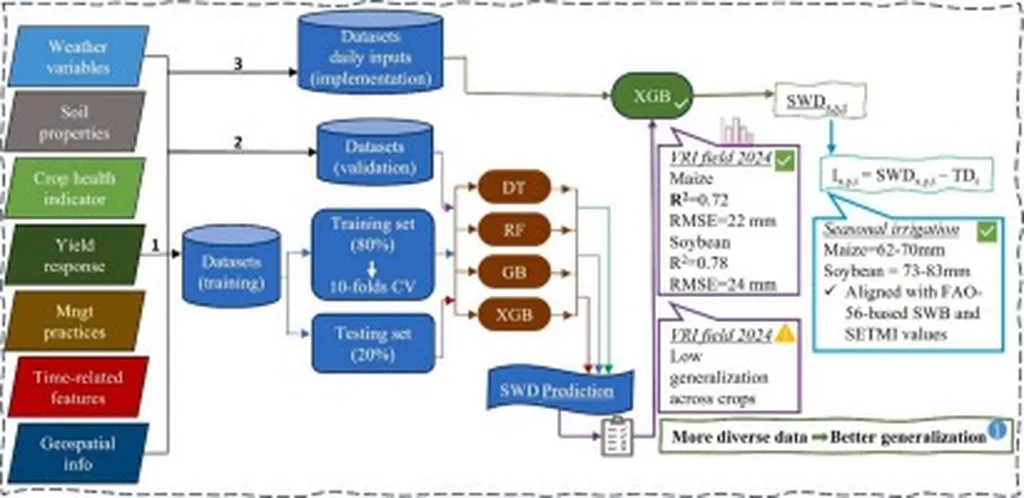In the heart of the Midwest, a groundbreaking study is reshaping how growers manage one of the most critical yet often overlooked aspects of containerized plant production: root zone temperature (RZT). Led by James F. Cross from the Department of Food, Agricultural, and Biological Engineering at Ohio State University, this research is paving the way for smarter, more efficient irrigation practices in the horticulture industry.
Containerized plant systems have become a cornerstone of modern agriculture, offering a lifeline to regions with poor soil quality and enabling year-round crop production. However, these systems are not without their challenges. Extreme RZTs can wreak havoc on root function, stunting growth and leading to significant crop losses. Currently, growers often resort to irrigation as a cooling strategy during heatwaves, a practice that is not only suboptimal but also wasteful.
Cross and his team set out to address this issue by exploring the potential of predictive modeling. By monitoring environmental conditions and substrate temperatures at experimental sites in Tennessee and Ohio from June to October 2024, they uncovered strong correlations between substrate temperature and factors like ambient air temperature, downwelling shortwave radiation, and vapor pressure deficit. These correlations, which peaked 2 to 5 hours before the substrate temperature observation, laid the groundwork for developing simple yet effective predictive models.
The team employed both machine learning techniques, specifically shallow neural networks, and linear statistical models to create these predictors. The results were impressive, with models incorporating air temperature and shortwave radiation achieving an R² value of 0.84–0.93. This means that these models can predict substrate temperatures with a high degree of accuracy, up to five hours in advance.
“This research is a game-changer for the horticulture industry,” says Cross. “By providing growers with reliable, real-time predictions of substrate temperature, we can help them optimize their irrigation strategies, reduce water waste, and ultimately improve crop yields.”
The commercial implications of this research are vast. For instance, in the energy sector, efficient irrigation management can lead to significant energy savings. By reducing the need for excessive irrigation during high-temperature events, growers can lower their energy consumption, contributing to a more sustainable and cost-effective agricultural practice.
Moreover, the simplicity of the models developed in this study is a significant advantage. As Cross explains, “The models we’ve developed are low-complexity and can be easily integrated into existing agricultural systems. This makes them accessible to a wide range of growers, from small-scale operations to large commercial farms.”
Published in the journal *Smart Agricultural Technology* (translated from Chinese as 智能农业技术), this research is set to shape the future of horticulture. By providing a tool for proactive RZT management, it offers a promising solution to one of the industry’s most pressing challenges. As we look ahead, the integration of such predictive models into smart agriculture systems could revolutionize the way we approach crop production, making it more resilient, efficient, and sustainable.

